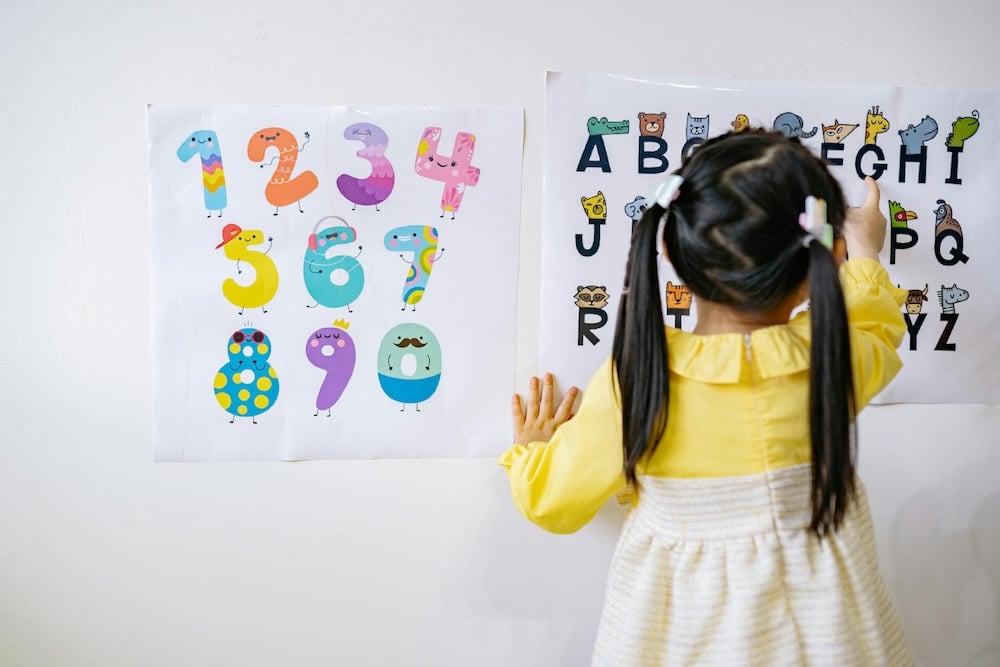
Have you ever thought about what it is like working as a preschool teacher in an international or purely Japanese daycare or preschool center? Maybe you love kids and want to try something different from your typical eikaiwa job. Here is a comprehensive guide on what to expect as a preschool teacher in Japan.
There are currently thousands of foreign preschool teachers across Japan working in fully pledged international schools that give students the full global experience with great exposure to using English as the primary language of instruction. Others are considered bilingual schools that use both Japanese and English as a means of communication, alternating the languages on different days.
English is becoming recognized as an integral part of education in Japan, with public elementary schools adding English as a subject as early as the third grade. In addition to this, there is a growing number of expat families living in all parts of the country, so bilingual or English preschools are becoming more prevalent. As a result, more and more schools have started to offer their services and have opened doors to native as well as non-native English speakers to teach English as early as preschool. What do you need to know if you want to become one?

Basic Requirements for Preschool Teaching:
- A Bachelor’s Degree: In any major preferably in the field of education.
- Language Proficiency: Native speaker or a non-native speaker with native-level fluency.
Salary and Benefits
Preschool teachers’ salaries typically range from 250,000 yen to 300,000 yen per month, depending on experience. Most schools start teachers at an entry-level salary, with annual raises based on tenure. Contracts are generally renewable yearly, but some companies offer full-time permanent (seishain) contracts to long-term teachers.
In addition to salary, many schools provide Shakai Hoken (health/social insurance/pension) coverage and transportation allowances. Some schools also offer housing allowances, depending on the financial situation or negotiation involved, as well as yearly bonuses.
What Type of Visa You Need
To become a preschool teacher, you need to have one of the following visas: Specialist in Humanities, Long Term, Permanent, Spouse, or Dependent. This job is available for most expats except for those with the Instructor Visa and working as an ALT, with which you need to get approval from immigration by obtaining a “Permission to Engage in Activity Other Than That Permitted Under the Status of Residence Previously Granted” stamp.
Most schools are not very strict about the type of educational background you have as long as you have completed 4 years at the tertiary level. Depending on the position like head teacher or lead homeroom teacher, some schools may prefer having at least 1-2 years of teaching experience.
Daily Schedule
The age groups of the students can vary from as early as 1 to 6 years old.
A preschool teacher’s schedule can vary based on their assigned shifts, but typically, classes run from 9 AM to 4 PM. The day often begins with a brief meeting to discuss goals and tasks. During circle time, the foreign teacher leads activities while the Japanese staff assists. This session includes practicing English greetings, learning the days of the week, singing and dancing, and discussing the weather.
After circle time, there’s usually an hour of playtime or park time before lunch, which starts at noon. Teachers may eat with the children to free up their break time for other tasks, though some schools allow them to take their break during lunch.
Naptime follows lunch, from 1 PM to 2:30 PM. During this period, teachers work on lesson plans, prepare materials, and have a snack. At 3 PM, there is typically another class until 3:30 PM. Pickup time is at 4 PM, after which kids have playtime, and teachers supervise. Some schools also have English video sessions during this time.
Classroom Management
Managing a classroom of preschoolers involves creating a structured yet flexible environment that encourages learning and social interaction. Teachers are also responsible for maintaining discipline and ensuring the safety and well-being of all children.
Curriculum-wise, most preschools have a yearly schedule provided at the beginning of the school year, guiding teachers to tailor their classes and monthly themes accordingly. Many schools in Japan have adopted the international GrapeSEED curriculum, which is used across Asia, Africa, and Europe.
Foreign teachers are responsible for teaching, lesson planning, and coordinating with Japanese staff and the school manager. In some schools, foreign teachers are also required to participate in childcare duties such as serving food, changing clothes, potty training, and writing updates in communication notebooks or online student portals about the students’ day. They also oversee nap time, ensuring children’s sleeping positions are checked every 5-15 minutes to prevent SIDS. However, some schools reserve these tasks for Japanese staff with nursery or preschool licenses.
Parental Interaction
Regular communication with parents is crucial. Teachers often provide daily or weekly updates on their child’s progress, address any concerns, and participate in parent-teacher meetings. To avoid any kind of miscommunication, Japanese teachers communicate with foreign teachers regarding the student’s behavior and performance in school, after which this will be included in the meeting only with the parents together with the Japanese staff.
Cultural Considerations
Understanding and respecting Japanese culture is crucial for preschool teachers. This means adhering to social norms, honoring the school’s hierarchy, and taking part in traditional events and ceremonies. For instance, it’s customary to greet everyone when you enter the school. Additionally, most schools require teachers to change into their school uniform before clocking in and to clock out before changing back into casual clothes.
Bringing gifts when traveling, known as omiyage, is another important custom. Teachers should also bring their own indoor shoes, utensils, and lunch. While some schools provide lunch for teachers, they usually deduct a small amount from the salary to cover the cost of the meal.
Language Barriers: Even in bilingual schools, some level of Japanese proficiency can be beneficial. This can help in communicating with staff and parents who may not speak English fluently.
Benefits and Challenges
Pros:
- Cultural Immersion: Working in Japan offers a unique opportunity to immerse yourself in Japanese culture and language by learning from your colleagues as well as your students.
- Community: Building relationships with students, parents, and colleagues can be highly rewarding. Seeing your students’ progress from not knowing a word of English to having short but clear conversations is one of the most rewarding things you will ever experience. Seeing them perform on several events like sports day, winter concerts, and end-of-school-year ceremonies and knowing you have your team with you helping you out in accomplishing this and parents commending you for efforts is quite a rewarding experience that includes memories that you will forever cherish.
- Professional Growth: Experience in a diverse educational setting can enhance your teaching skills and career prospects. If you plan on opening your own preschool or in-house daycare in the comforts of your own home, this could be a good stepping stone to consider.
Cons:
- Language Barrier: Limited Japanese skills can be a challenge in some situations. If you would like to practice your Japanese, this may not be the job for you. Plenty of schools require foreign teachers to only use English within the school premises.
- Cultural Adjustments: Adapting to Japanese work culture and societal norms can take time. Japanese culture involves indirectness and a lot of “reading the air” in many situations. Your coworker may not directly tell you what is allowed or not allowed so be aware of your surroundings. Bringing lunches with very strong odors or wearing perfume should be considered. Even sitting positions are important as crossing your legs
- Workload: Balancing lesson planning, teaching, and administrative tasks can be demanding. Many schools may require you to maintain a daily diary of activities showcasing what you did during the day, in addition to filling out detailed forms regarding each child’s food intake and bathroom usage on top of your obligations as a teacher preparing lessons and such. You may need to work overtime in some cases during busy seasons such as Christmas or other events.
In the past, schools used to strictly hire teachers only from countries like the US, UK, New Zealand, Australia, Ireland, and South Africa. But things are changing. More and more schools are opening up, becoming more inclusive by hiring teachers from other English-speaking countries such as the Philippines, Indonesia, Pakistan, India, and beyond.
This shift shows a growing understanding of the value in sharing diverse cultures. It’s not just about teaching English; it’s about giving students a global cultural experience. By embracing different backgrounds, schools enrich the learning environment, preparing students to navigate our interconnected world with ease.
Personal Stories and Experiences
Having been a preschool teacher for many years, I must say was both challenging and rewarding. The first month is usually the hardest, especially for students who are just starting preschool. It can take months for them to warm up to the teachers and their classmates, although, for some, it happens as early as 2 days. Teaching in preschool was a passion of mine, and if you are like me, one of the most important things to consider before jumping in is your health. Many kids are prone to colds, diarrhea, and other illnesses that can affect you. There were times when everyone, including myself, was sick with a cold from the children. Backaches and other conditions may arise after lifting beds, heavy tables, and even the children themselves. That’s why it’s crucial to take your vitamins and take care of your health – after all, it’s just as valuable as the well-being of the kids you’re teaching.
Tips for Prospective Teachers
- Learn Basic Japanese: Even a basic understanding of Japanese can go a long way in daily interactions.
- Be Adaptable: Flexibility and patience are key in adapting to a new cultural and educational environment.
- Engage with the Community: Building relationships with fellow teachers, parents, and the local community can enhance your experience and support network.
Working as a preschool teacher in Japan is a unique and rewarding experience. While there are challenges, the opportunity to influence young minds and immerse yourself in Japanese culture makes it a worthwhile endeavor. Whether you’re seeking a new adventure or a meaningful career change, teaching preschool in Japan could be the perfect path for you.













